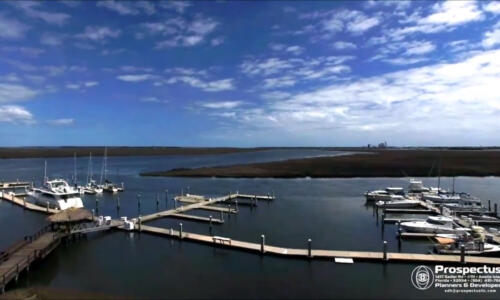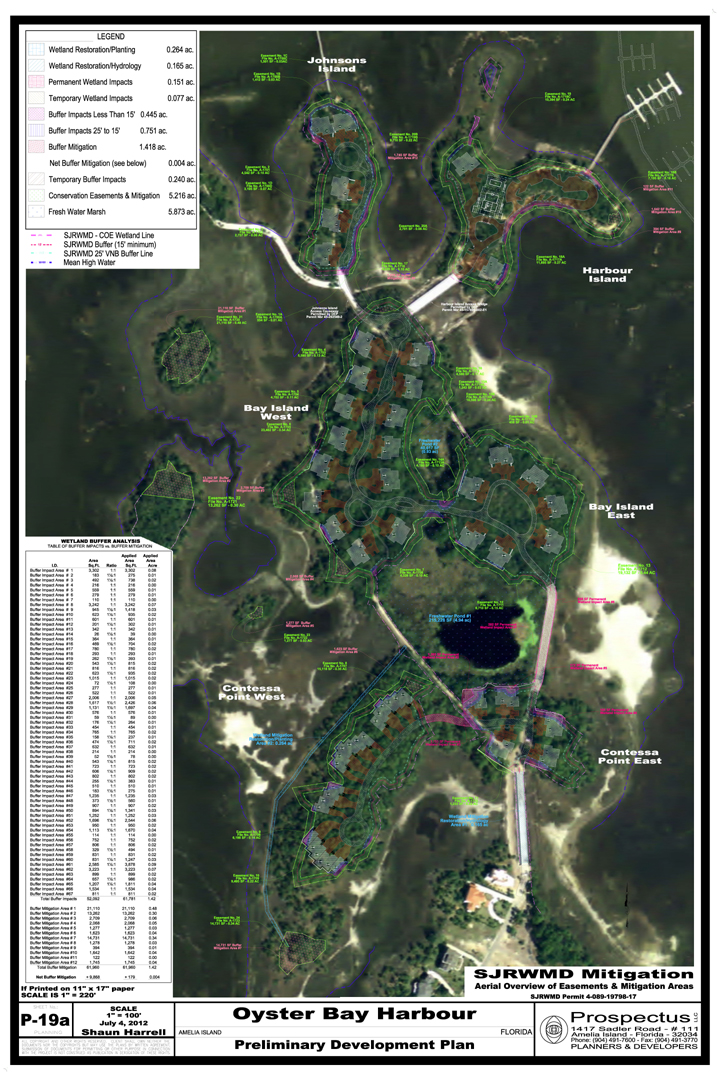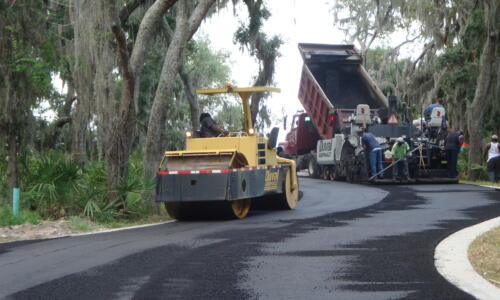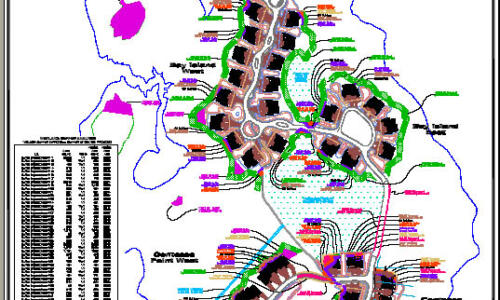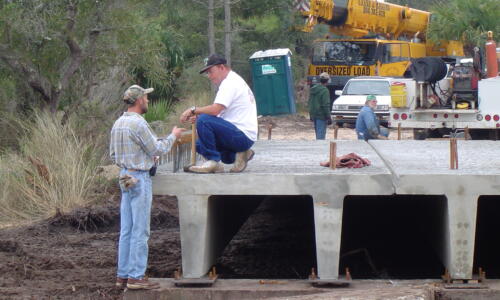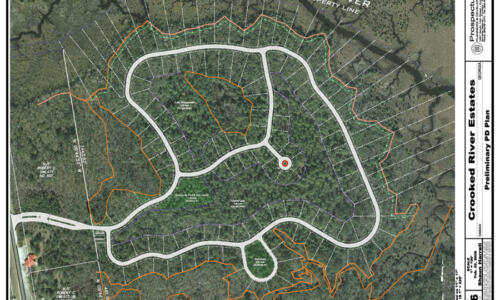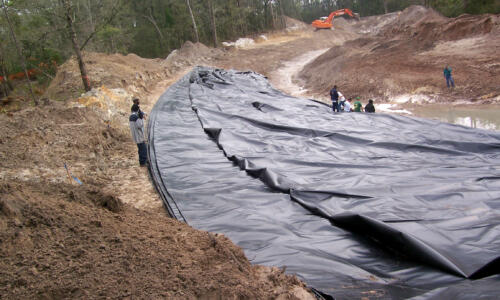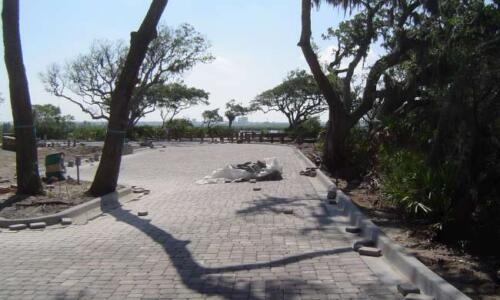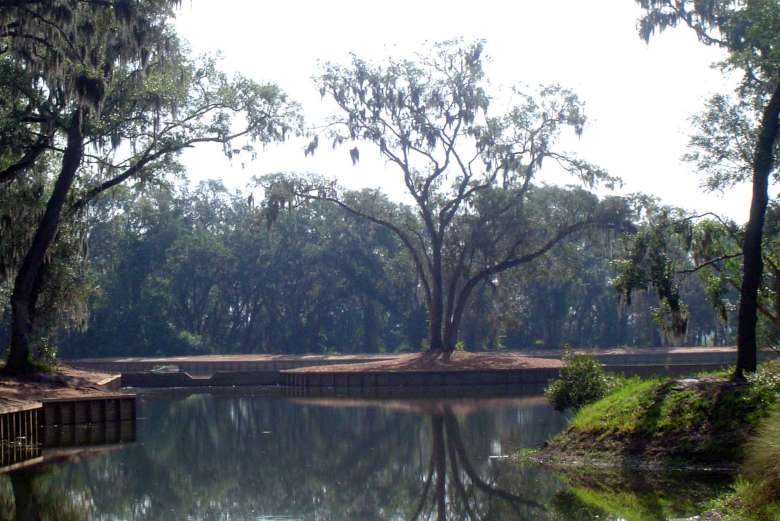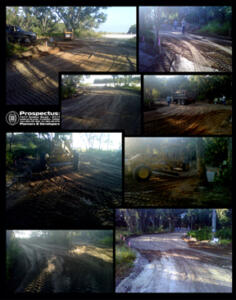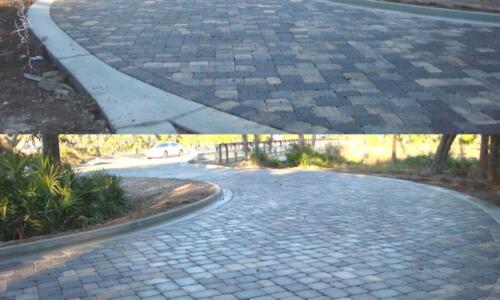An April 14, 2017 drone video of the docks at the Oyster Bay Harbours Yacht Club showing the damage created by tropical storm Matthew last Fall. This 2:30 video does a full circle around the docks with an emphasis on the hurricane damage from both the east and west viewpoints.
Low Impact Development Specialists
Master Planning • Permitting • Estimating • Construction Management
The Expertise to Create Better Communities
Historic Buffer Mitigation Plan Approved
SJRWMD rules require an average 25-foot buffer preserved in its natural state at the rear of every marsh-front property. Working with SJRWMD environmental scientist, Prospectus proposed an alternative strategy. We proposed creating larger undisturbed wetland areas not located on individual lots. These larger upland pockets are permanently protected with conservation easements that are the responsibility of the homeowner association (HOA.) Removing the ownership from individuals in favor of the HOA permanently protects the habitat for wetland fauna and wildlife. The larger areas are more sustainable and offer viable habitat. Once the SJRWMD was receptive to the concept, the real work started. They say the ‘devil is in the details’: we created detailed AutoCAD plans accounting for literally every square foot of land in the project. We included a table of the buffers area required by the rules and the area of our alternative plan.
Oyster Bay Harbours is paving the road to the Yachtclub
What I personally admire in the OBH siteplan is the way the residences are built around nature. When you move into a newly built home, nature is fully intact because trees, bushes and brushes have been spared wherever possible. Most developments start out with moving bulldozers in. Not here. As Marc’s overall view to preserve nature was a mission in itself, it took project Project Manager Shaun Harrell to make sure it could actually work inside of the financial parameters. A story I could never tell or write however, is the one that deals with the invisible (and sometimes visible) quality of a meticulous execution of the master plan.
Breaking new ground with Buffer Mitigation
October 30, 2009 Prospectus breaks new ground with St. Johns River Water Management District submitting a “buffer mitigation plan” and receiving a warm reception from District staff. The clearly detailed plan accounted for the area of buffers that are typically required by District rules for “secondary and cumulative impacts.” Alternative areas were depicted and a table of the areas (precisely calculated to the square foot) verified that the plan would exceed the area required by the rules. The plan provides better areas for habitat by grouping some of the area into larger tracts. Mitigating “secondary and cumulative impacts” attempts to offset the effects of development near sensitive wetland areas by providing undisturbed buffers. The buffers are typically 25-feet from the wetlands. Grouping the tracts into larger areas not only “met the rule” but also provided undisturbed areas that would foster the growth of wetland plants and wildlife.
Building a Bridge Across the Salt Marsh
To access oak hammock islands we needed to span several hundred feet of slat marsh. The original plan was a typical pile supported bridge design however, soil borings in the marsh indicated minimal bearing capacity. The length of the pilings that would be needed made the project cost beyond the scope of the client’s budget. A brilliant plan was proposed to create large ‘floating’ concrete pads for the bridge’s foundation. After obtaining the necessary ‘dredge & fill’ permits from DEP & COE, construction commenced. IIn spite of some typical logistical hurdles, like getting the oversize bridge “T”s and heavy equipment through the dense oak canopy, construction proceeded smoothly. The cosmetic finishes included: a stucco finish over the DOT rated guard rails and a nautical look with ‘old rope’ pulled through wooden posts.
Crooked River Estates designs complete
Prospectus completes the designs for Crooked River Estates for presentation to the Ken Kessler, Community Planning and Development Director in Kingsland, Georgia. The community will feature 123 estate-sized lots overlooking the vast tidal marsh surrounding the Crooked River. Crooked River got its name from the river’s long, winding path to Atlantic Ocean. The master planned community features thirty lots along the riverfront that will be able to build docks. CRE, LLC, plans to excavate a large central lake offering dramatic views for the non-riverfront homes. According to project planner Shaun Harrell: “Our goal was to create a community where every lot was on the water and offered spacious views.” Very few communities in Kingsland will be able to offer the combination of city facilities and expansive waterfront views inside a gated community.
Building Stormwater Ponds with a Liner
We had a proposed pond that was going to border the rear yards of many future homes. We also had sandy, porous soils and very low groundwater conditions. The St. Johns River Water Management District rules require that bond banks be built no steeper than a 3:1 slope. All this meant there was insufficient land available to provide the required slope and reach the low ground water table to create a lake buyers would like to live on. Given all these conditions, we had no choice but to construct the pond with a liner. These photos show the process of building the pond and it’s progression into a thriving North Florida fresh-water ecosystem.
Protecting & Preserving Trees
A new sales-manager at one of our communities routinely asked prospects after a tour what they liked. The number one answer: The trees! We all know the look of communities, usually older, that have saved a lot of specimen trees. They have a special feeling, hard to describe yet unmistakable. Preserving large oak trees has become the standard for every Prospectus project. Trees most lethal adversaries are individuals and utility companies. The mindset of the utility company is a far greater danger to large trees during the community’s development. They want everything cleared to make easy access for their crews. We use two rules that can’t be violated by anyone: 1) only dig on one side of a root-ball, 2) remove some canopy after removing a large part of the root-ball. Make contractors keep 5 or 10 feet away from the root-ball. If that is not possible, make them dig by hand. We have had amazing success building curbs, sidewalks and roads right next to very large oaks (as these photos show.) With the proper mindset and the willingness to stand guard, you can too. Trees may also help boost your sales
Saving a Live Oak in the middle of a Stormwater Pond
One large live oak, located in the middle of a proposed storm-water pond, had become a favorite hangout for the Roseate Spoonbills. Our original master plan sought to maximize the retention capacity of the community’s storm-water ponds. This is another example of ‘what looks good on paper, sometime isn’t.’ We worked with the consulting engineers who permitted the pond with the SJRWMD (St. Johns River Water Management District) to determine the excess retention capacity in the lake design. We prepared a revised design that preserved the tree in the pond. Then had to convince the developer that the cost of the extra bulkheads was warranted. The preserved tree offers a safe refuge for the Roseate Spoonbills during their annual summer migration and a dramatic focal point for the pond. In addition to master planning services, Prospectus offers construction management which in this case took advantage of special circumstances to improve the finished product.
Preparing the Round-a-bout
December 3, 2010, Oyster Bay Harbours completes the final preparations to pave the road to the Yachtclub. The last section of road will be a dramatic round-a-bout finished with interlocking concrete pavers. Thanksgiving week workers compacted sub-grade soils in anticipation of Curb Systems, Inc. pouring curbs the following Monday. Compaction tests confirmed Tuesday that soils […]
Round-a-bout Pavers Finished
Installation of the Mega Oldtown Pavers on the round-a-bout are finished in time for Christmas festivities at the Oyster Bay Harbour Yachtclub. In spite of the chilly temperatures, Atlas Marble, Tile and Pavers installed over 6,000 square feet of pavers in less than three days. Using a crew of ten men, the job was finished in time for everyone to enjoy Christmas with the satisfaction of a job well done! Prospectus originally designed the round-a-bout and approach to the Harbour Island Bridge with the typical asphalt pavement bordered with a five-foot paver circle. “We were able to upgrade the project using DOT class pavers for the entire round-a-bout and stay within our client’s original budget,” This is a good example of delivering a superior product because we designed, permitted and budgeted the project. We knew all the constraints, upgraded the project and made our client happy.
The Otter and the dock
February 12, 2010, caught this otter feeding on the docks at Oyster Bay Harbours. He has been bringing oyster shells on to the concrete docks and smashing the shells on the dock until he can get at the meat inside. Last Saturday he was seen swimming on his back gnawing on a fish perched on […]

